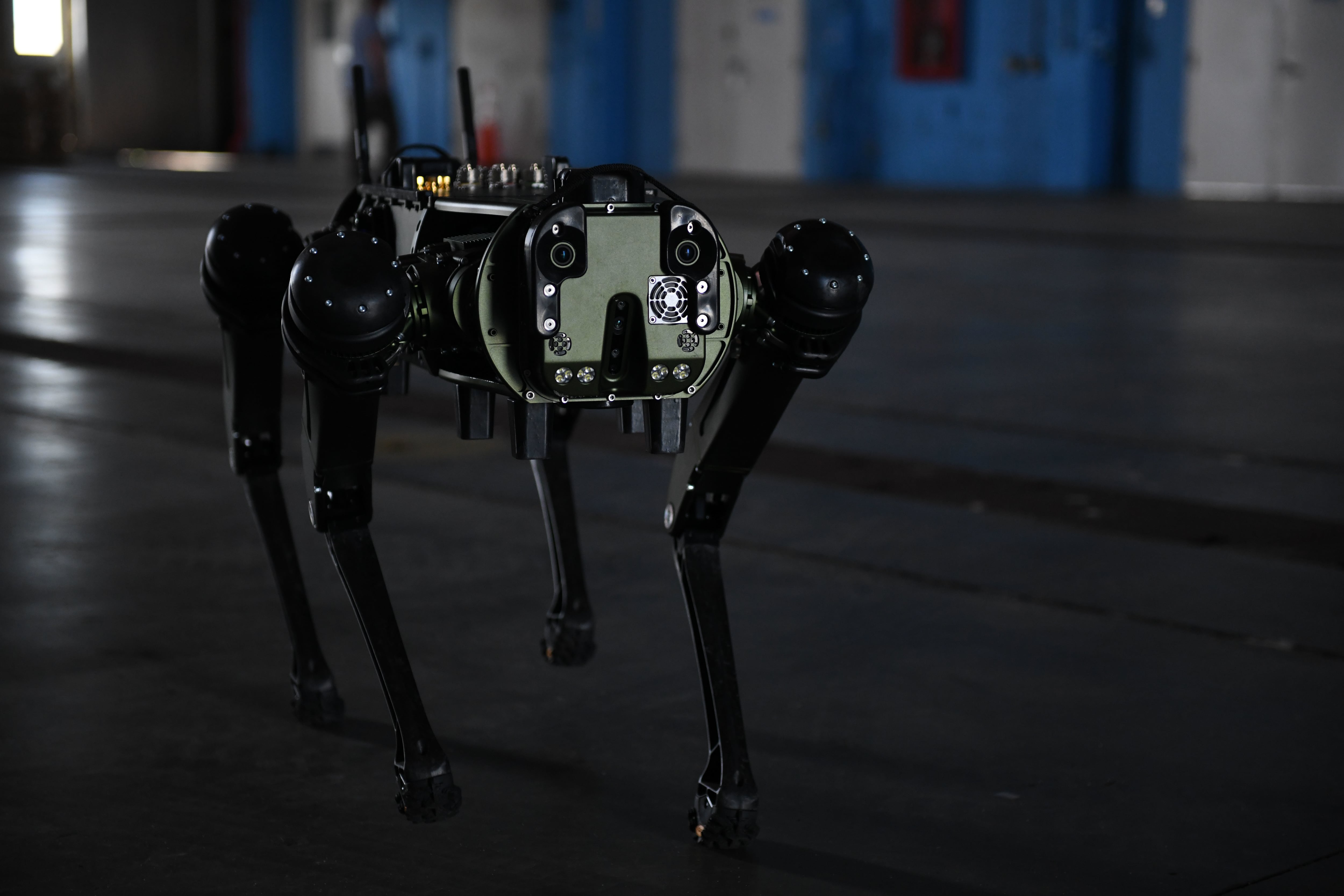[Editor’s note: This story has been updated to correct the name of the carrier involved in the Battle of Midway.]
In 2020, a fire broke out on the amphibious assault ship Bonhomme Richard as it underwent maintenance in San Diego, causing catastrophic damage before it was extinguished. In the near future, such disasters might be nipped in the bud by nimble robots that can charge into spaces too hazardous for human crew.
That’s the vision of Glen Henshaw, section head for robotics and machine learning in the Naval Center for Space Technology, out of the Naval Research Lab. Henshaw heads up one of two Office of Naval Research-sponsored NRL teams experimenting with four-legged robot “dogs” — testing their ability to maneuver around the obstacle-filled spaces of Navy ships and to take on the underway maintenance tasks that are dangerous or mundane and time-consuming. The numerous “tanks and voids” onboard ships that require regular cleaning and maintenance in tight spaces provide a perfect-use case for such robot companions.
“It would be nice if you had some other system that can go in and do those kinds of dirty and dull tasks that, right now, humans do,” Henshaw said.
Currently, Henshaw’s team is experimenting with the Ghost Robotics Vision 60, a bent-legged quadruped used by the Air Force for such tasks as base perimeter patrol. The team’s work involves the mechanics of getting the robots to operate successfully on ships: to keep their balance during high sea states, for example, and manipulate hatches. The other team, focused on finessing robot-human interaction aboard ships, is working with a Boston Dynamics Spot Enterprise robot, the star of viral videos highlighting its obstacle navigation prowess and even sophisticated dance skills.
While Henshaw isn’t convinced the robot that might ultimately serve alongside sailors at sea will look like a dog, legs are a requirement, he said. From the raised “knee-knocker” doorways to the vertical ladders between decks, ships require more maneuverability than a wheeled robot can deliver.
For Henshaw’s effort, robot experimentation has involved rebuilding the Ghost Vision 60′s entire “software stack” — the ability to meddle with the robot’s inner workings was a key reason the team chose it — and conducting reinforcement learning, which involves millions of simulations of robot operations in the ship environment. At this point, walking maneuvers remain somewhat buggy, he said. Current experimentation also involves an arm, a fifth appendage, affixed to the robot dog’s back, that can help it open hatches.

“These things tend to not work until you fix every single problem with them,” Henshaw said. “And then all of a sudden, they start working magically, and we’re almost there. But we’re just not quite there yet.”
The experimentation team has plans to test the robot out in increasingly demanding shipboard environments. Henshaw said they have an “open invitation” to test-drive it aboard the decommissioned aircraft carrier Midway, which is permanently moored in San Diego and operates as a museum. From there, he said, the dog will get underway aboard an active Navy ship for “sea state” tests.
While the ship that might participate in these experiments has not been identified, Henshaw said the amphibious ships that carry Marine units typically have the space and availability to accommodate such tests. This could all happen quite fast: Henshaw said sea state tests could happen within the next six months. (The Boston Dynamics test robot has already undergone some shipboard trials, Henshaw said, although he did not have more details).
While there are many ship tasks for which a loyal robot assistant might be handy, Henshaw said he’d love to develop a robot skilled at the damage control work that made Navy ships so resilient during World War II. He pointed to the aircraft carrier Yorktown, which was instrumental in winning the Battle of Midway despite sustaining so much damage that Japanese fighters thought they’d sunk it. Likewise, he said, Bonhomme Richard was lost because human responders could not pinpoint the origin of the fire and could not get close enough to it, due to the hazard it posed, to do effective damage control.
“If you could have a robot that could go into that sort of environment, and start contributing materially to the survival of a ship that had taken damage,” he said, “I think that would be the home run.”
Both NRL robot test teams recently published solicitations for a second robot so they can have more options for experimentation. While shipboard robots may one day have the ability to reduce the size of human crews or take on onerous tasks like ship painting and reapplication, Henshaw emphasized that NRL’s work will only present the Navy with options for further development or investment.








